Did you know there’s a new Razer Blade out there? Check out our Razer Blade 2019 review.
The Razer Blade has been on our list of best gaming laptops for a couple of years now. But, for 2018, Razer’s thin and light device is even better than ever, coming in with a few notable innovative updates like a 15.6-inch display fitted in a 14-inch chassis.
The Razer Blade (2018) is a huge revolution for the popular line, its redesign resulting in one of the smallest 15-inch gaming laptops to date. Meant for gaming but not with a similar form factor to best Ultrabooks and Razer’s own Razer Blade Stealth, this update couldn’t have come at a better time. The laptop scene has completely evolved over the years, and it’s nice to know that one of your favorite gaming laptops is doing what it can to keep up.
The Razer Blade (2018) was redesigned from the ground up, and honestly, we’re here for it. Still, with the competition getting tougher every year especially in the gaming sphere, is the Razer Blade (2018) still worth the attention? That’s what we’re here to find out.
Spec Sheet
Here is the 2018 Razer Blade configuration sent to TechRadar for review:
CPU: 2.2GHz Intel Core i7-8750H (hexa-core, up to 4.1GHz with Turbo Boost)
Graphics: Nvidia GeForce GTX 1070 (8GB GDDR5 VRAM; Max-Q); Intel UHD 630
RAM: 16GB DDR4 (dual-channel, 2,667MHz)
Screen: 15.6-inch FHD (1,920 x 1,080) matte display (144Hz; IPS; 100% sRGB)
Storage: 512GB M.2 SSD (NVMe PCIe 3.0 x4)
Ports: 1 x Thunderbolt 3; 3 x USB 3.1; 1 x mini DisplayPort 1.4; 1 x HDMI 2.0
Connectivity: Intel Wireless AC 9260 (802.11ac; Bluetooth 5.0)
Camera: 1MP built-in webcam (720p)
Weight: 4.63 pounds (2.10kg)
Size: 13.98 x 9.25 x 0.68 inches (35.5 x 23.5 x 1.73cm; W x D x H)
Price and availability
Razer has priced the latest Blade similarly to its previous laptops – somewhat exorbitantly. The 2018 Razer Blade starts at $1,899 (£1,699, AU$2,899), which gets you a full HD (1,920 x 1,080) display at 60Hz powered by the same processor as the other versions, though paired with an Nvidia GTX 1060 and 256GB of storage.
There’s a new ‘Base’ dual-storage model of the Razer Blade, that’s a lot like the starting model, but with both an SSD and HDD. This dual-storage Razer Blade will set you back $1,599 (£1,479, AU$2,499) with a 128GB SSD and a 1TB hard drive. You can get up to a 256GB SSD paired with a 2TB HDD for $1,799 (£1,649, AU$2,799).
To get the model that we reviewed here, you’ll have to spend a huge $2,599 (£2,329, AU$3,999). In between that is a model with the 144Hz display, the GTX 1060 and 512GB of storage for $2,199 (£1,979, AU$3,299), and one with everything you see on our spec sheet, but with less storage for $2,399 (£2,149, AU$3,699).
Similarly, the pricest version of the Asus ROG Zephyrus GX501 will set you back $2,899 (about £2,199, AU$3919), getting you a stronger GTX 1080GPU as well as Nvidia G-Sync – all else is the same. The entry level version costs $2,299 (about £1,749, AU$3,100), with a GTX 1070 behind a 120Hz display. To get the same graphics card in the Razer, you’ll have to drop another 100 bucks or quid.
At the same time, the MSI GS65 Stealth – also updated at CES 2019 – comes in at just $1,799 (£1,790, AU$2,599) at the entry level, with the same processor as the Razer Blade’s starting option, only with a faster 144Hz display. At the highest end, the GS65 doubles the Razer Blade’s storage and memory for $2,999 (£2,349, about AU$4,080).
It’s not hard to find the same hardware for less cash in a less flashy chassis. It’s not enough to convince this editor to cough up the extra cash, but we’re not everyone.


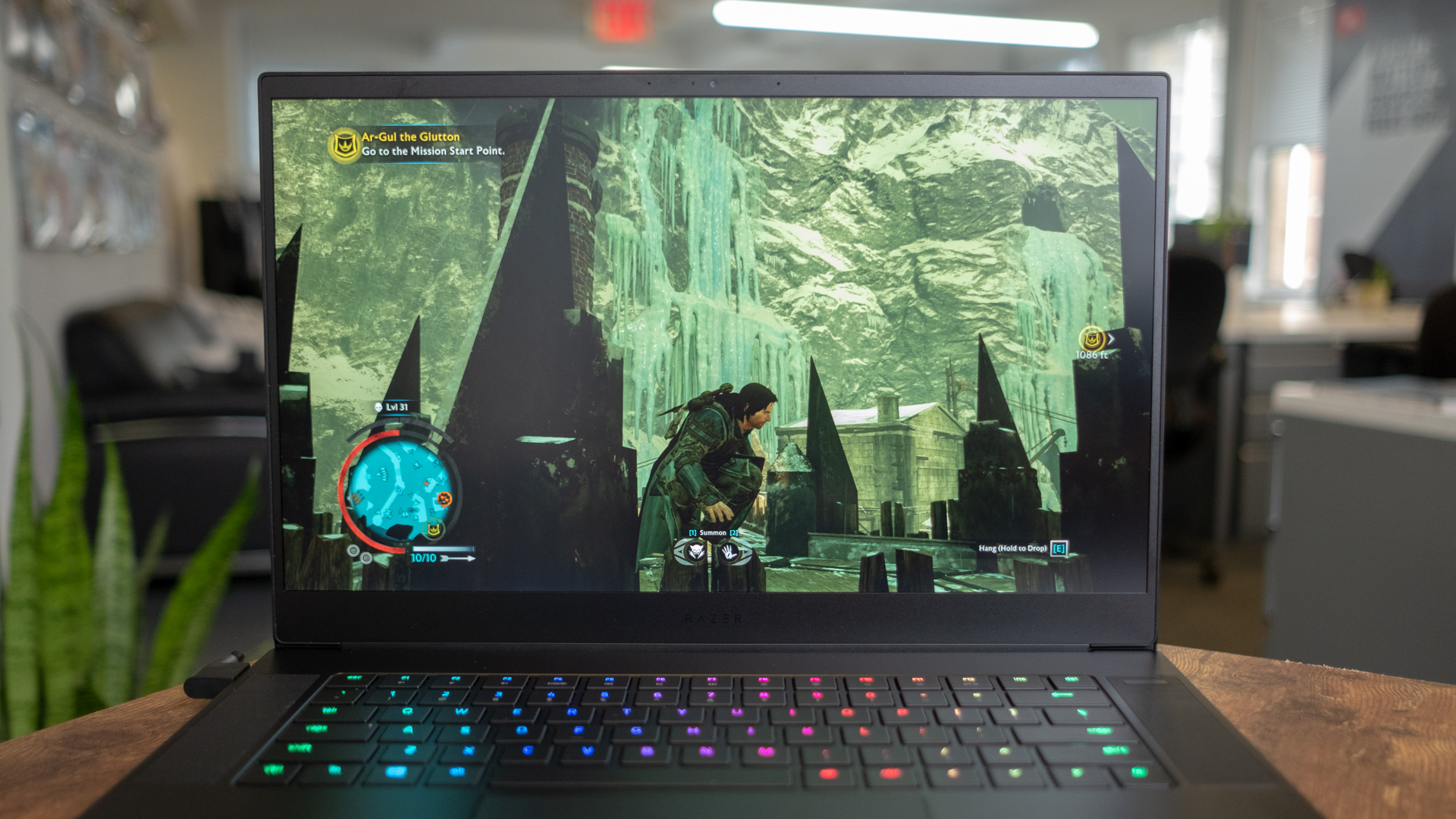
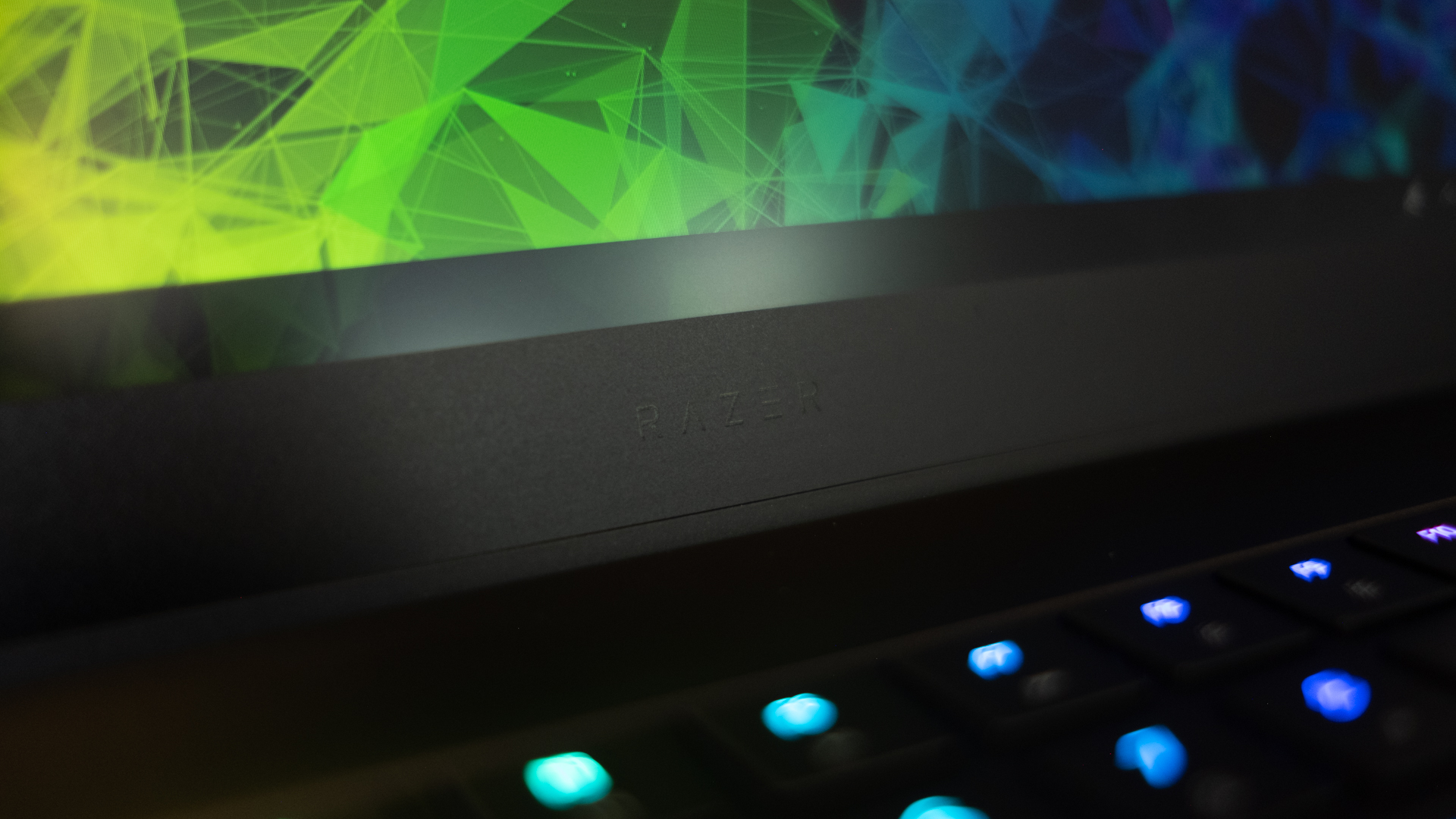

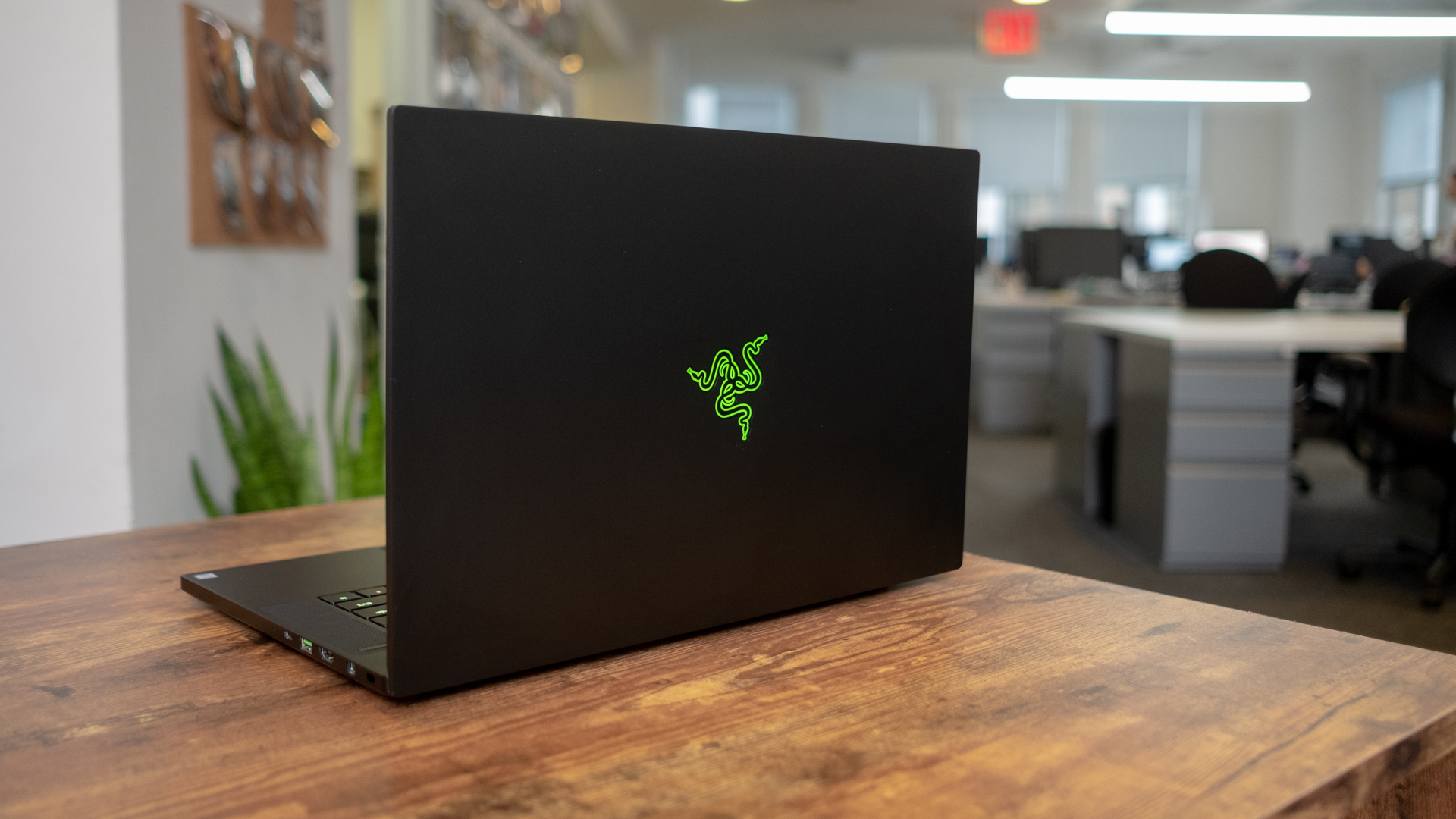
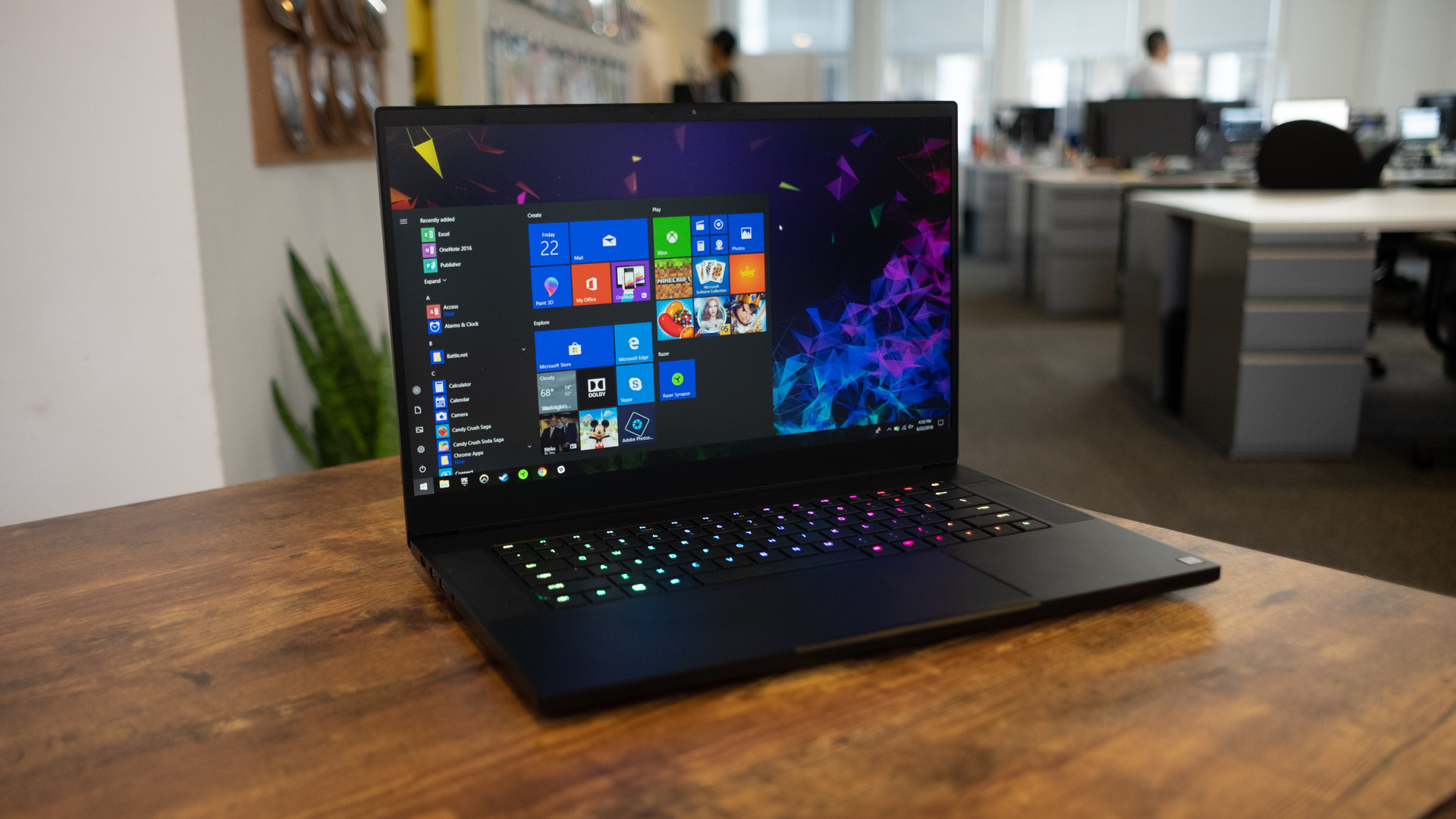
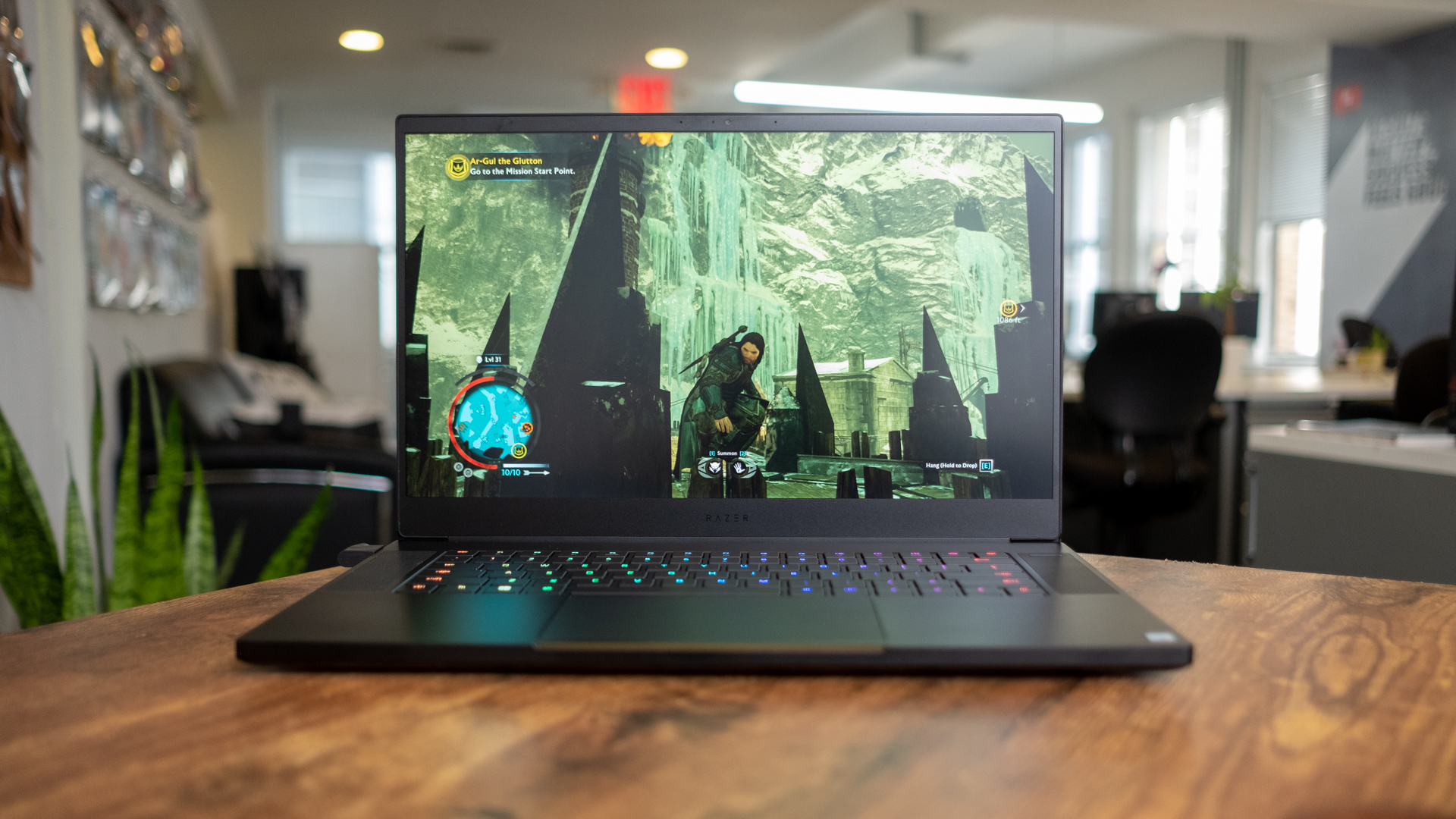
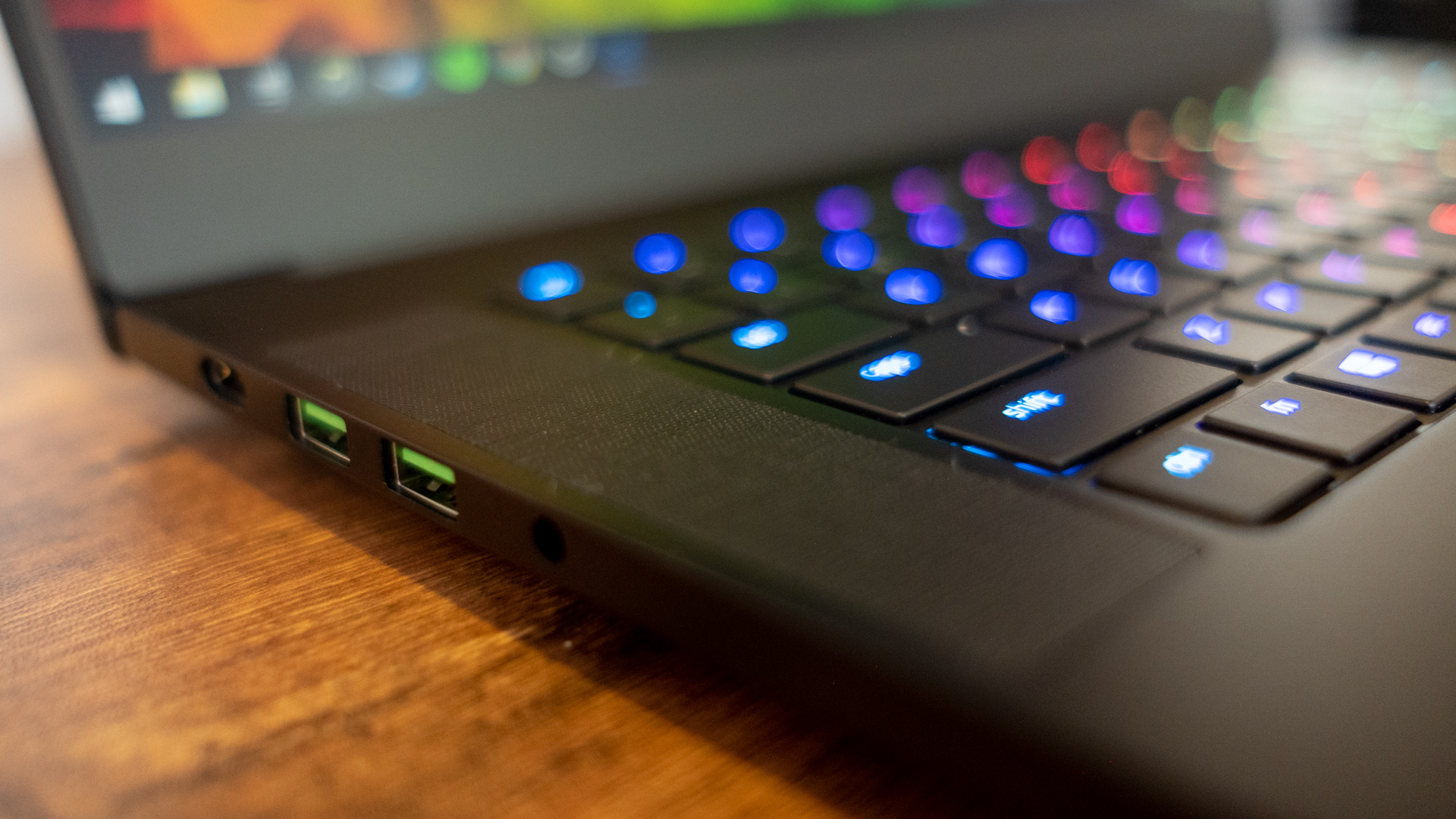
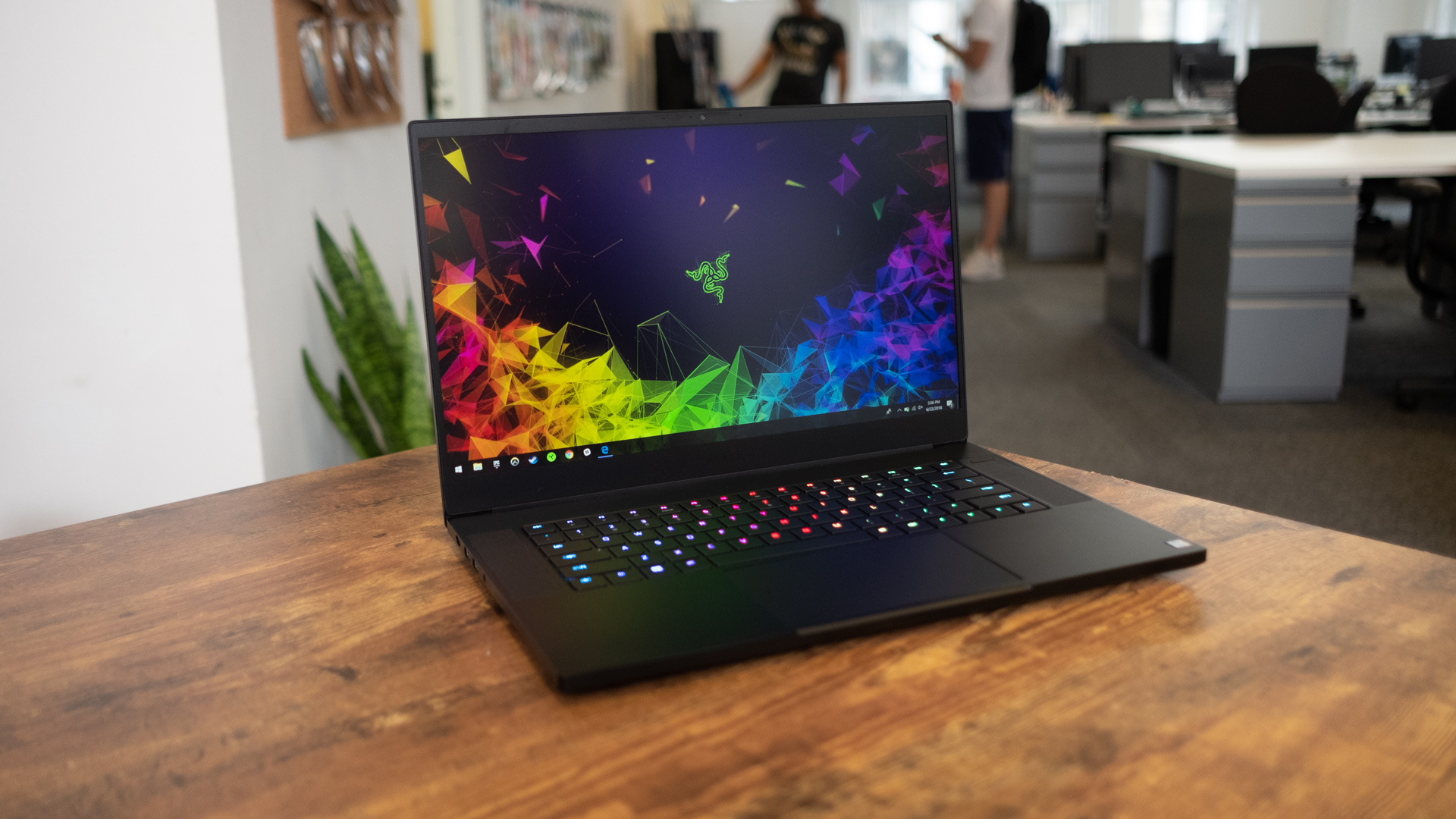


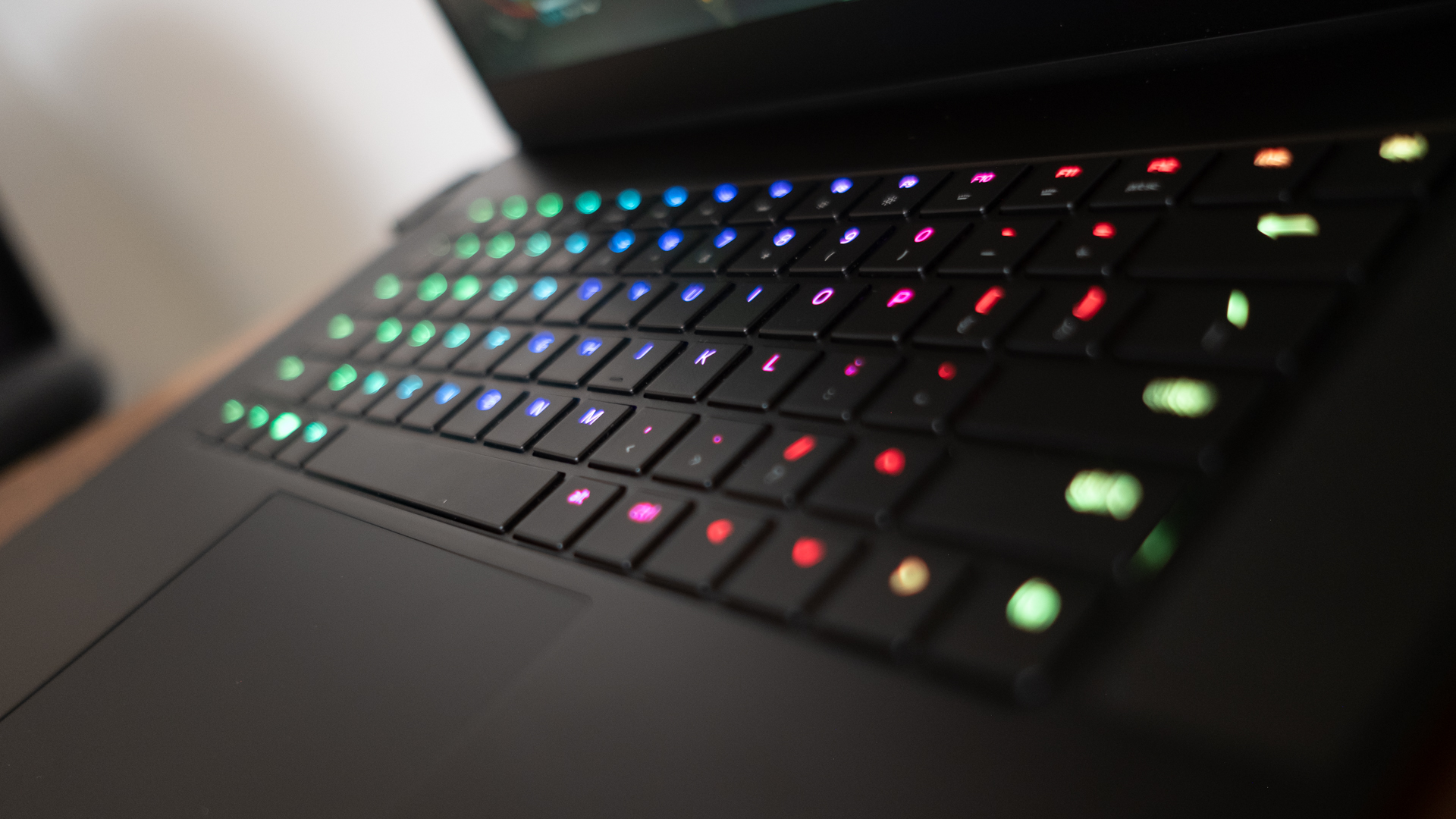
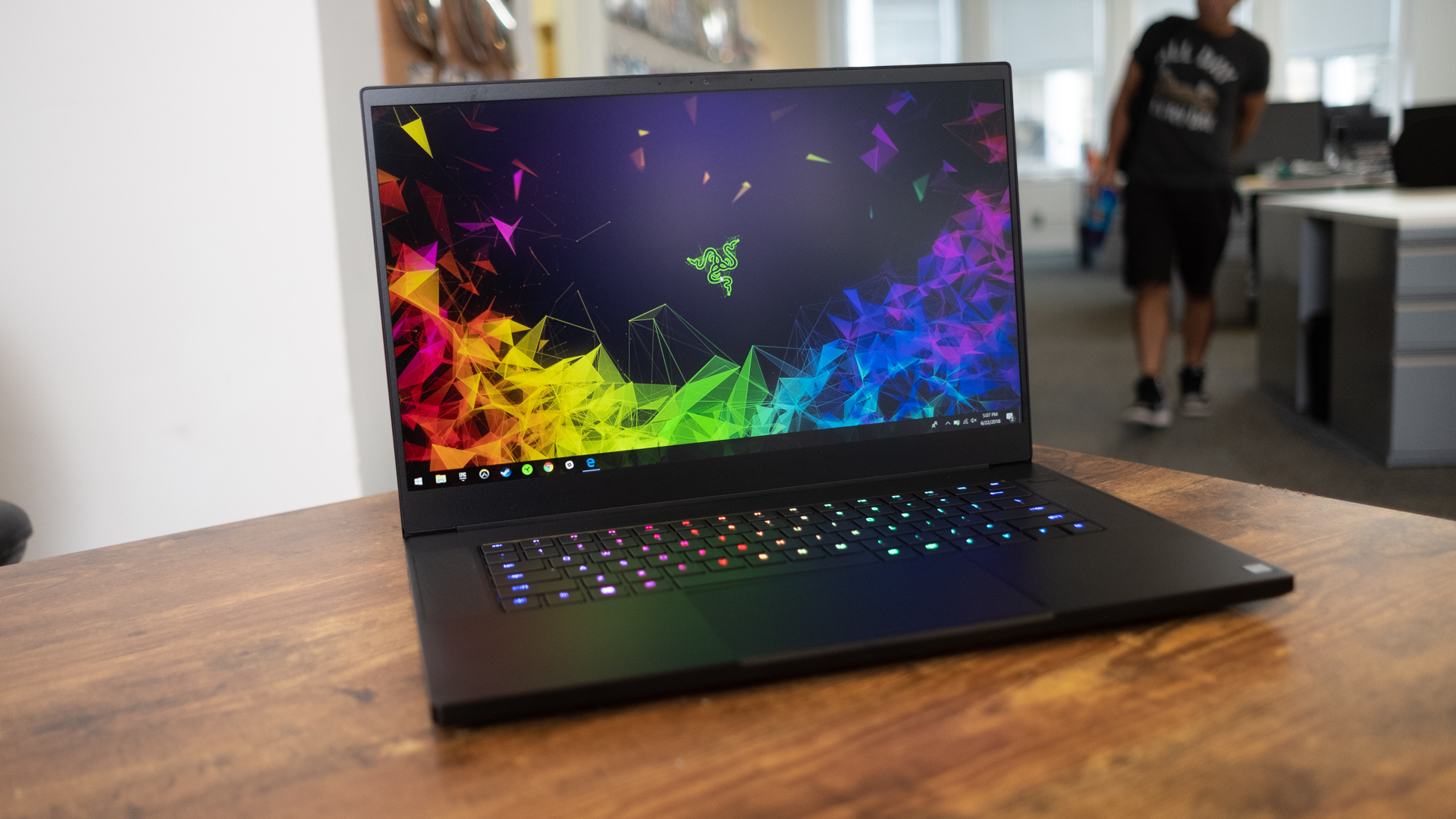
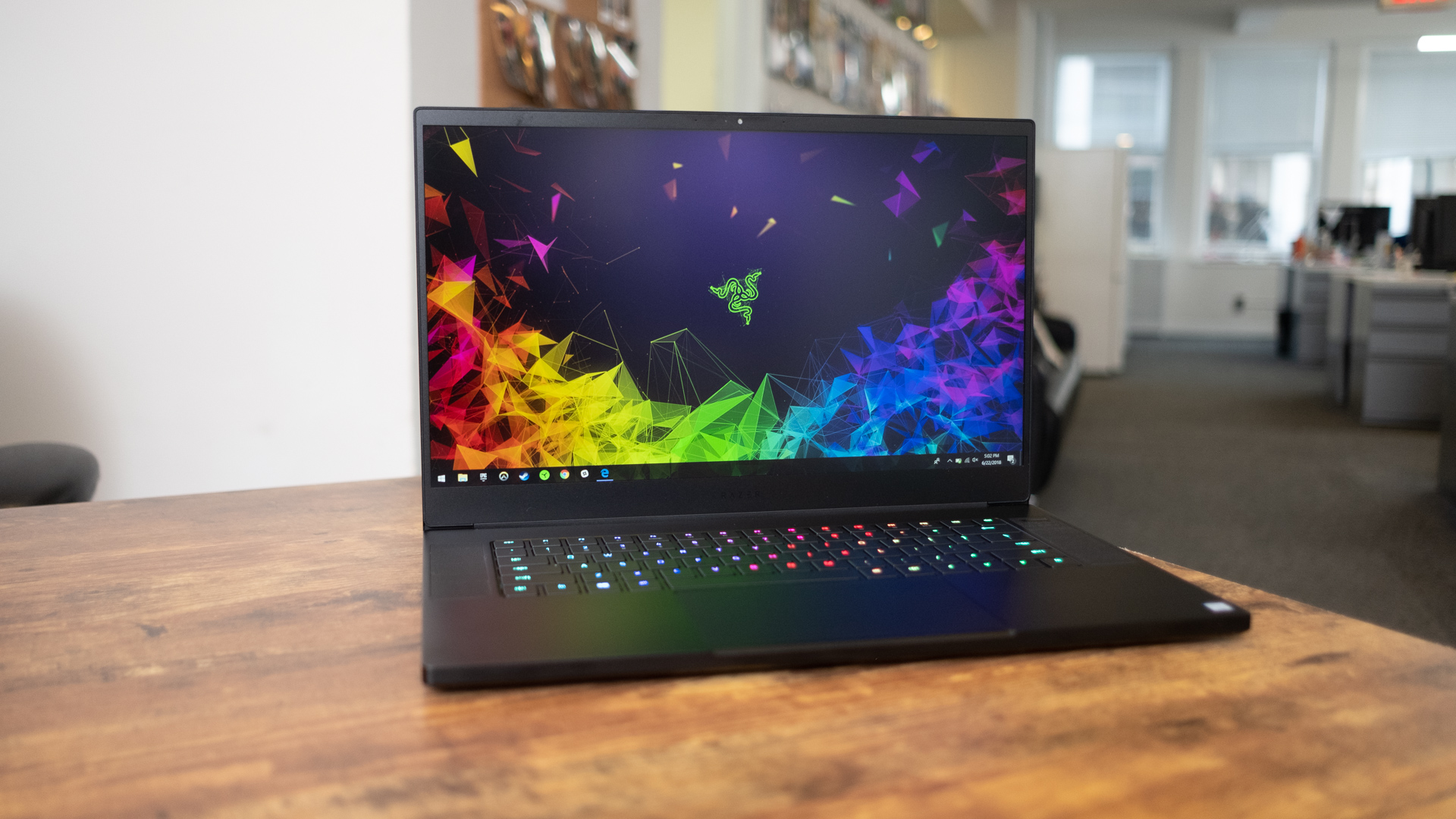
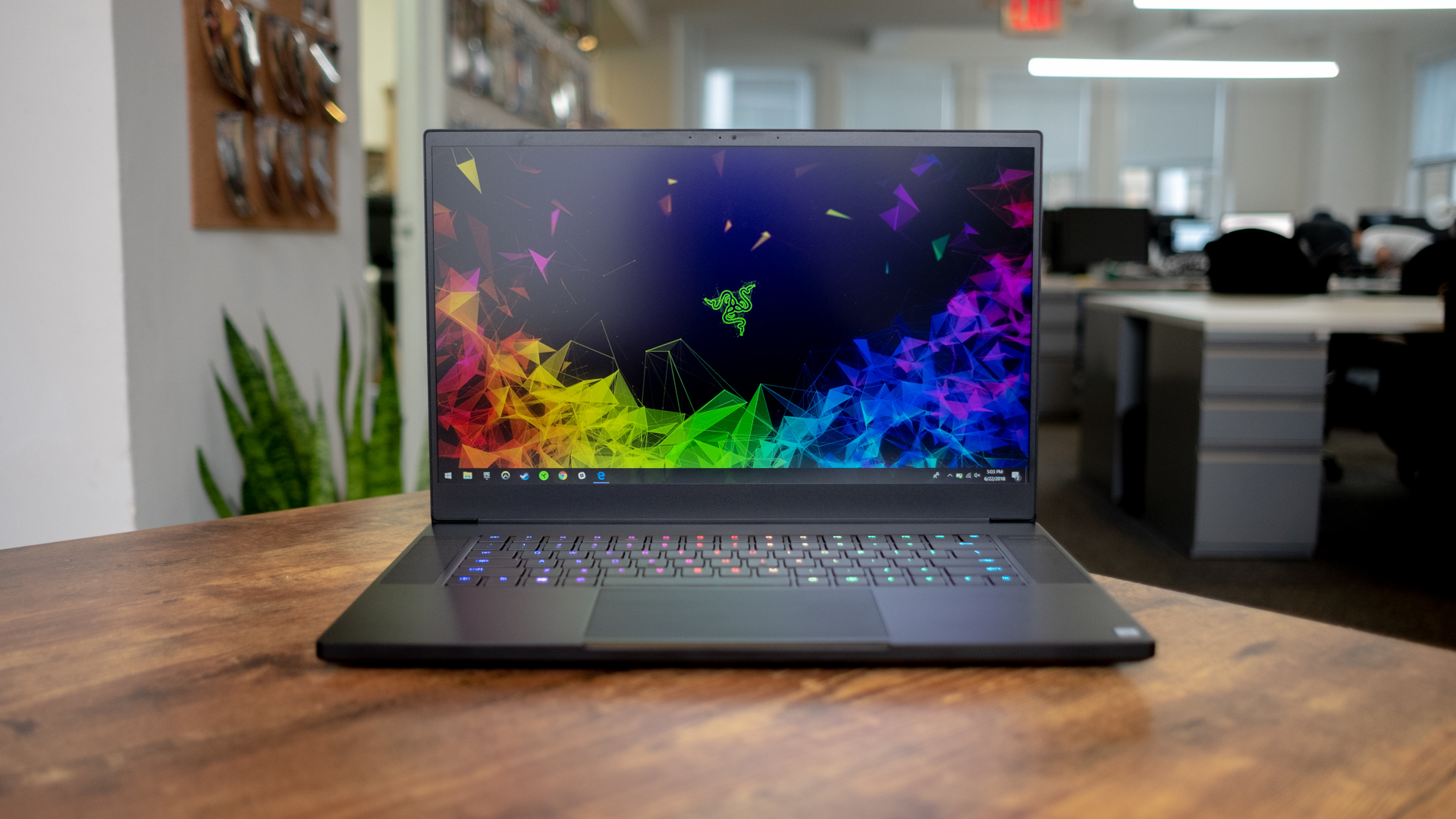
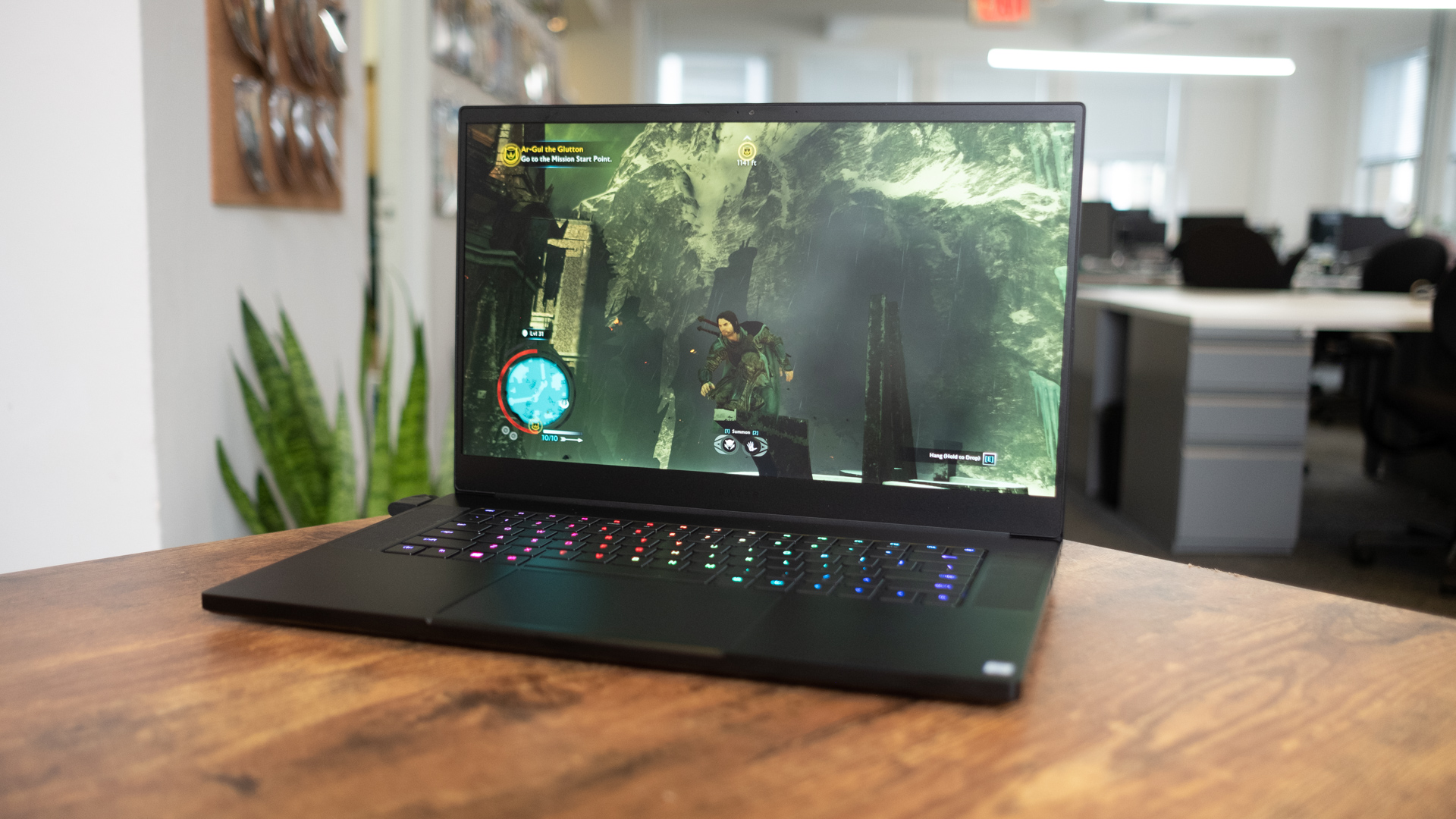
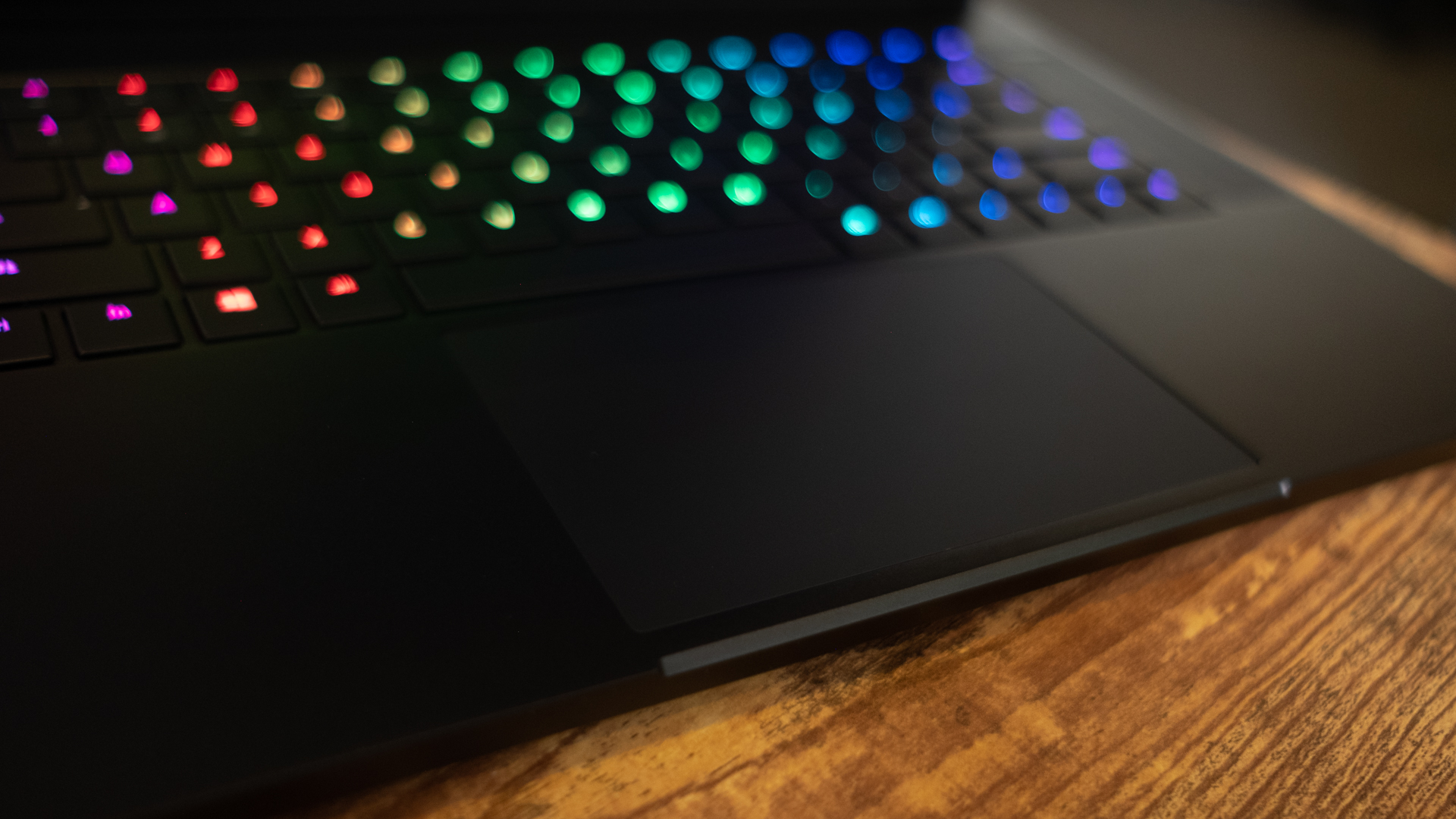
Design
Still, the new Razer Blade is the best looking gaming laptop we’ve seen from Razer. Still clad in an all-black, unibody aluminum shell, the Razer Blade adopts a far more angular shape this time around, while toning down the lighting to just the keyboard and Razer logo on the lid.
Simultaneously, Razer has put a lot of effort into slimming down the Razer Blade, with the manufacturer claiming to have made the ‘world’s smallest 15.6-inch gaming laptop’ at 0.66 inches (16.76mm) thin on the GTX 1060 model. It also comes in at under 14-inches wide, thanks to a new, thinner screen bezel.
Fortunately – and other laptop makers, listen up – the Razer Blade keeps the webcam to its proper position above the screen while implementing narrow bezels.
Still, even with how thin the Razer Blade is, it’s surprisingly dense – coming in at half a pound heavier than the MSI GS65 Stealth. While Razer has also managed to reduce the size of the charging brick, it’s still heavier overall than comparable thin and light gaming laptops, and it was heavier than we’d have liked.

Beyond an intense streamlining, the Razer Blade design is much of what was found before, only larger. Of course, the keyboard feels fantastic, offering some of the punchiest feedback and smooth travel we’ve experienced on an island-style keyboard.
However, the key layout is somewhat baffling, with the ‘up’ arrow key sitting between the Shift and ‘?’ keys. This has made typing out questions a major pain, as we constantly hit the up arrow in haste, adding a question mark to the line above where we are typing. We would handily take shrunken arrow keys if it meant a more sensible layout otherwise.
The trackpad finds itself in a similarly unfortunate situation. While we’re celebrating the fact that Razer has finally implemented a clickpad design, dropping those flimsy buttons like a bad habit, the tracking surface is perhaps a bit too wide. We often find ourselves accidentally moving the cursor when typing. Otherwise, it’s a smooth and accurate Microsoft Precision tracking surface.
Finally, while we appreciate the top-firing speakers for their much fuller sound than most other notebooks, we’re a little puzzled by the lack of Windows Hello secure login options. Razer even included the perfect placement: a rectangular power button now rests atop the right speaker and feels smooth to the touch. At this price, secure login should be a shoo-in.

Display
Razer knocked it out of the park when it comes to the Razer Blade’s display. With a matte coating that does well at deflecting light clare, this panel may only be 1080p, but it’s simply gorgeous.
A lot of that comes down to the 144Hz refresh rate, which makes games look extremely smooth as the refresh rate outpaces the frame rate of most games ran on the device. This allows the Razer Blade to shore up potential shortcomings of the GTX 1060 or 1070 in producing consistent frame rates at high detail settings.
The 100% sRGB color gamut also helps the display just pop with a wide variety of colors supported at impressive accuracy. The factory screen calibration that Razer gives to all of these laptops goes a long way, too.
First reviewed June 2018
- Images Credit: TechRadar
It shouldn’t come as a surprise that the Razer Blade 2018 is a beast when it comes to both computing and graphics performance. Frankly, we would expect as much out of a machine that costs this much, juas as we would of its rivals. However, we find the laptop a bit lacking when it comes to heat management – despite Razer’s best efforts – and short battery life.
Benchmarks
Here is how the Razer Blade 2018 fared in our suite of benchmark tests:
3DMark Sky Diver: 29,951; Fire Strike: 13,412; Time Spy: 4,863
Geekbench 4: 4,955 (single-core); 20,365 (multi-core)
Cinebench CPU: 1,013 points; Graphics: 117 fps
PCMark 8 Home: 3,942
PCMark 8 Battery Life: 2 hours and 5 minutes
Battery Life (TechRadar movie test): 2 hours and 46 minutes
Total War: Warhammer II (1080p, Ultra): 60 fps; (1080p, Low): 122 fps
ME: Shadow of War (1080p, Ultra): 71 fps; (1080p, Low): 131 fps
The Blade managed to maintain parity in performance test results with the GS65 Stealth, even managing to outpace it by a few frames per second (fps) in each graphics benchmark. Unfortunately, we weren’t able to test the Zephyrus laptop using the same game, but its GTX 1080 handily outclassed the 1070 within our Blade in the 3DMark tests – expectedly.
Expect to be able to complete pretty much any computing task on this laptop short of ultra-high detailed gaming. With plenty of RAM and Intel’s latest Coffee Lake processor, you should be able to go from rendering 4K video to playing some rounds of Overwatch without a fuss.
However, for all of Razer’s (seriously impressive) efforts to better cool its thinner and lighter gaming laptop, we find the laptop gets rather unbearably hot on either side of the base just beneath the hinge after just a few minutes of gameplay. Unfortunately, it appears that even Razer’s new vapor chamber cooling system can’t compete with the combination of additional processing and graphics power – and therefore more heat generated – and a smaller space through which it can pass.
Protip: take caution before you decide to, say, play a PC game on this laptop on your lap with a controller. Also, probably don’t overclock this laptop (more on that in a moment) while it’s on your lap either.

Battery life
Also, the Razer Blade’s battery life leaves a lot to be desired, lasting about an hour longer than the Zephyrus laptop in testing, but coming up short of the MSI GS65 Stealth by about as much. Gaming laptops having poor battery life is nothing new, of course, but things have changed in the last few years.
These days, it’s common to see gaming laptops provide battery life beyond five hours, so Razer has fallen behind the curve here. You’d be lucky to get through most short flights using this laptop without an outlet.
At this price range, we would like to get at least four hours out of this laptop in either scenario. Given how Razer is increasingly positioning its laptops as ideal for mixed use, this is a factor worth seriously considering.

Software and features
The only piece of pre-loaded software you’ll find on the Razer Blade – which, without subsidies beyond an Intel sticker on the base, could explain its pricing a bit – is Razer Synapse. This is the company’s app for controlling the laptop’s various RGB lighting settings, but it has a new purpose this time around: even more performance.
With the version of the software found on the Razer Blade, you can now activate a gaming mode that boosts the graphics chip’s processor and video memory frequency by 100MHz and 300MHz, respectively. This will surely give you a healthy fps boost in games, but will only increase the heat put out by the device, so that should be considered before you overclock on the go.

Final verdict
Razer has crafted its most attractive and alluring laptop yet with the latest Blade, but unfortunately still suffers from some basic, common flaws seen in both other gaming laptops as well as Razer’s own previous efforts. This gaming laptop will get you farther than most in terms of fps and smoothness, with its overclocking mode and 144Hz display.
However, lackluster battery life and some seriously hot temperatures, not to mention the omission of Windows Hello support and a mildly goofy keyboard layout give us pause. That’s especially considering the expectedly lofty price tag.
What you have here, then, is an incredibly stylish and good-feeling laptop – one that this editor would even consider paying a premium for – that is held back by some flaws that are tough to ignore. Razer is clearly at the top of its game with the latest Blade, but the rest of the gaming laptop world is clearly catching up.
- Images Credit: TechRadar
from TechRadar: Technology reviews https://ift.tt/2ZHnZJf
No comments:
Post a Comment